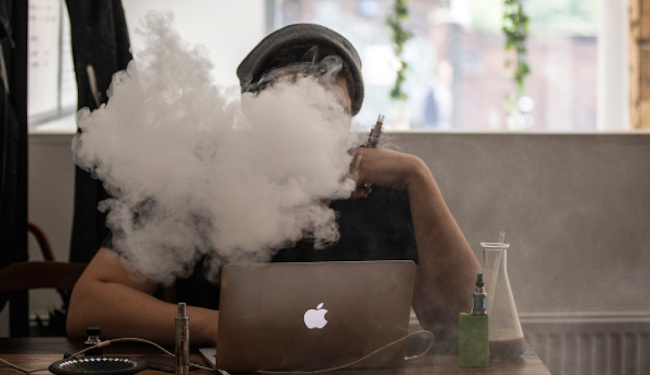
All of the kids who look up to stars who vape (we’re looking at you, Leo) might need to need to get another hobby, because the Food and Drug Administration will be making their vape life far less chill and more stressful due to a whole slew of new regulations. Vaping is already illegal on planes, and we mentioned earlier this summer that the FDA was considering stricter regulations on e-cigs and vapes, but starting on August, 8 new laws surrounding vaping are coming to a smoke shop near you.
According to USA Today all vaping products that have been on the market for 9 years or less need to pass a ‘regulation test’ required by the FDA so they can keep selling their products. Vaping products will have a two-year grace period while their application is being reviewed. Greg Conley, the president of The American Vaping Association (yes, that’s really a thing) is doing what he can to stop the regulations from happening, claiming that because of the new set of rules the vaping industry will be gone in a puff of smoke (or e-liquid) by 2018. Stores who sell e-cigs and vaping gear will also be required to be more vigilant with asking their customers for identification. Anyone who appears to look under the age of 27 will be asked for their ID when purchasing vaping supplies and nobody under the age of 18 will be able to buy anything at vape shops. Most states have their own laws regarding selling e-cigs, hookah, pipe tobacco, and hand-rolled cigars to minors, but on August, 8 these laws will be across the United States affecting young vapers from Portland, ME to Portland, OR.
Although cigarette smoking is down for minors, e-cigs are up drastically. The Centers for Disease Control and Prevention claim that in 2011 only 1.5% of high school students used these products in 2011, within 4 years that number went up to a staggering 16%. The American Lung Association sees vaping not as a safe alternative to cigarettes, but rather a gateway to them. A representative for the health organization spoke about the new law stating,“It will help prevent young people from starting to use tobacco, and help consumers better understand the risks of using these products.”
(Via USA Today)
